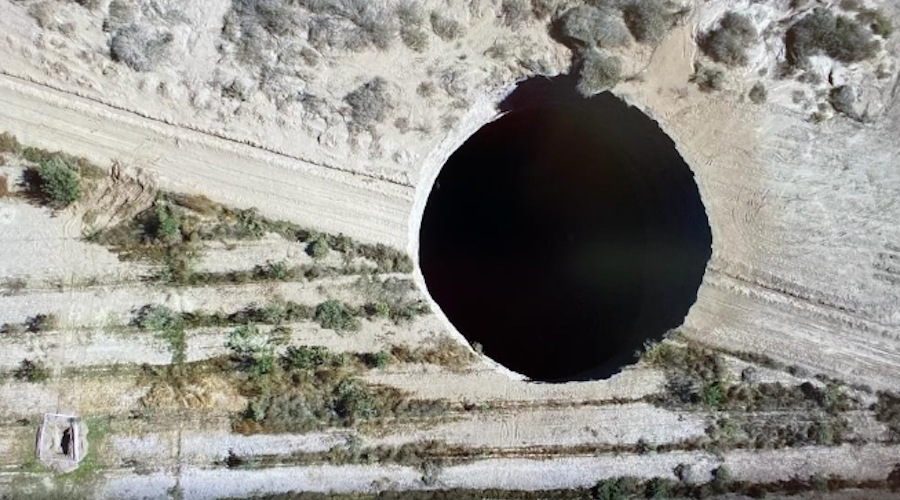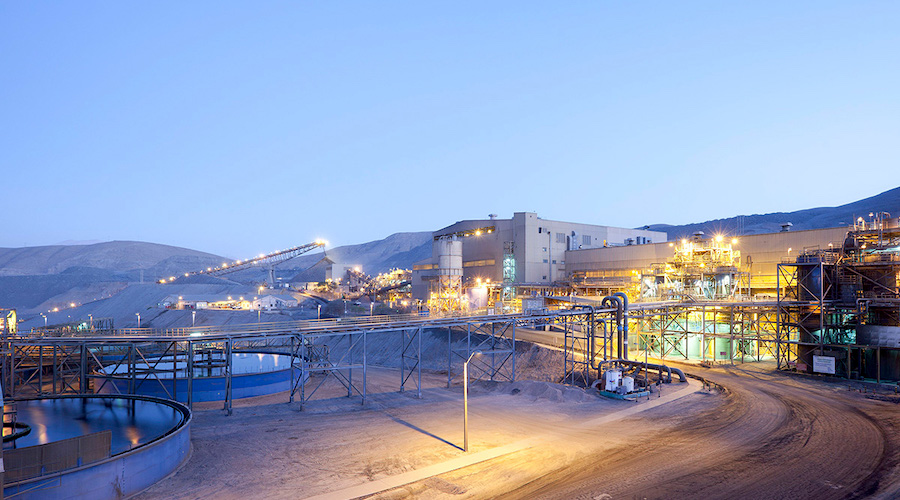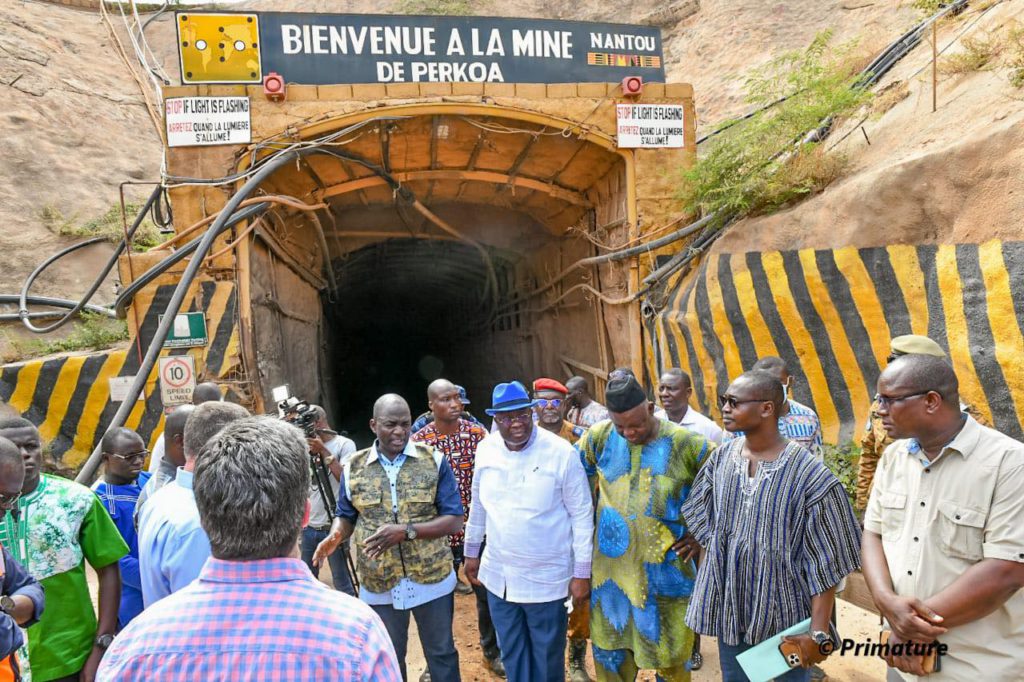NUKE NEWS
German economy minister rules out
keeping nuclear plants running to save gas
German Economy and Climate Action Minister
Habeck holds news conference on the future use
of LNG, in Berlin
Sun, August 21, 2022
BERLIN (Reuters) -German Economy Minister Robert Habeck ruled out on Sunday extending the lifespan of the country's three remaining nuclear power plants in order to save gas, saying it would save at most 2 percent of gas use.
These savings were not sufficient to be worth reopening the debate about the exit from nuclear energy given the consensus on the topic, he said during a discussion with citizens at the government's open-door day.
Former Chancellor Angela Merkel initiated legislation to halt the use of nuclear power by the end of this year after the Fukushima nuclear disaster of 2011 with a majority of voters in favour. But attitudes are shifting amid fears of an energy crisis this winter following a decline in Russian gas deliveries - with the three-way coalition itself divided on the matter.
"It is the wrong decision given the little we would save," said Habeck, a member of the Greens party, which has it roots in the anti-nuclear movement of the 1970s and 80s.
On the other side of the debate, Finance Minister Christian Lindner of the pro-business Free Democrats reiterated his stance that it would be better to extend the lifespans of nuclear plants for a limited time than to bring coal plants back online.
"We shouldn't be too picky, but reserve all possibilities," he said, adding that he would be open to an extension of "several years" in the current circumstances.
Separately to the debate over gas savings measures, Habeck said he was open to extending the lifespan of one nuclear power plant in Bavaria if a stress test showed this was necessary to ensure the stability and supply of the electricity network in winter, he said.
Habeck accused the southern state and manufacturing hub, which depends on gas-fired power plants and has few coal-fired plants, of possibly contributing to problems by failing build up wind power production and improve the network.
The fact that Germany is having to supply France with electricity due to a drop in nuclear output is another factor at play.
German Chancellor Olaf Scholz said the result of the stress test should come towards the end of the month, or the beginning of next month - and only then would a decision be made.
The situation in France, where nearly half its reactors are offline because of corrosion problems and maintenance, showed how problematic the technology was though, he said.
New plants were so expensive that they pushed up electricity prices unlike renewable energies, he said.
(Reporting by Markus Wacket and Andreas Rinke; Writing by Sarah Marsh; editing by David Evans)
Bloomberg News | August 21, 2022
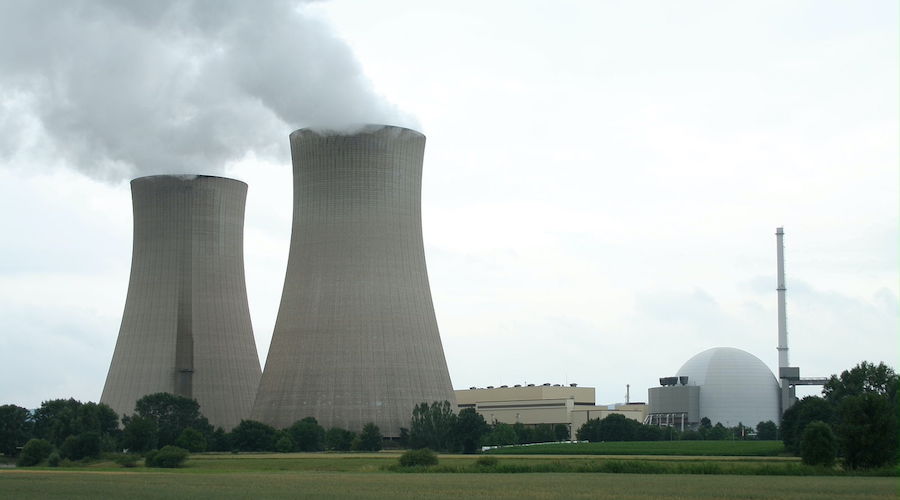
Nuclear power plant in Grohnde, Germany. (Image by Heinz-Josef Lücking, Wikimedia Commons).
Germany may not be able to replace all its imports of Russian natural gas this winter and might have to resort to nuclear power to plug part of the gap, the nation’s two most powerful leaders said.

Europe is in the middle of its worst energy crisis in decades, which has fueled inflation and put nations on the brink of a recession. That’s forcing politicians to look at all alternatives available, including atomic energy, a technology Germany had decided to exit permanently by the end of the year.

Speaking at a government open day in Berlin on Sunday, both Chancellor Olaf Scholz and Economy Minister Robert Habeck emphasized that while there’s an option of extending the lives of the nation’s three last reactors beyond December, it’s only under consideration because of the increasing worries that Europe’s biggest economy won’t be able to replace dwindling natural gas supplies from Russia.
While it’s not the first time the government has mooted the possibility of relying on nuclear for longer than planned, such comments are getting gradually stronger. At the same time, the technology is not the most economical, nor the safest available for Germany, Habeck said. Scholz highlighted maintenance and repair issues in France as a reminder of the problems older plants are facing.
“What worries me is that there is no ready answer to the question of what happens when gas runs out,” Scholz said. “If we were to make the decision to keep them running so that we make sure we don’t have a problem this winter, then it will only make a small contribution to solving our challenge because it is only about electricity production.”
EON open to talks on extending life of German nuclear plant
The operators, including EON SE and RWE AG, have said that they are open to discussing such an option with lawmakers but stressed the need for a swift decision. A study on the security of supply that will help Germany to decide on the nuclear plants will be available by the end of the month or early September, Scholz said.
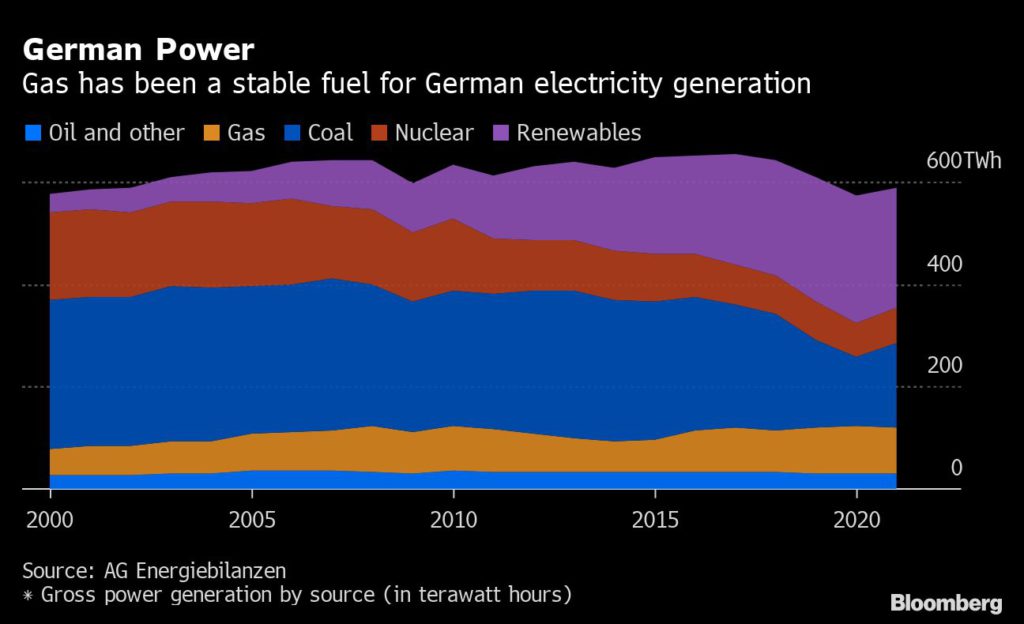
By contrast, German Finance Minister Christian Lindner was more bullish on the prospect of extending the lives of the reactors on a temporary basis. “There’s a lot to be said to use the three nuclear power plants that we have,” he said at the open day.
In the short term, reducing energy demand will make the biggest difference for Germany and all other nations pivoting away from Russian supplies.
Germany has urged citizens to lower their consumption and last week slapped a levy on gas use. It also seeks to bring back coal power plants that were being removed from the system and is investing in infrastructure to import more liquefied natural gas.
Gas stores are 78% full, according to the latest data from the Federal Network Agency, the country’s energy regulator.
“There is no scenario in which there is no gas, but there is a scenario in which there is not enough gas in storage, and supplies in other forms are not not so available as they were,” said Habeck. “The question is how big is the gap in the worst case. There is a gap and that is the real question.”
About 60% of Germans are in favor of extending the life of the remaining nuclear power plants in Germany, according to an Allensbach poll for Frankfurter Allgemeine Zeitung published on Sunday.
Those reactors might displace just 3% of German natural gas consumption next year, Kesavarthiniy Savarimuthu, an analyst at BloombergNEF, said in a report earlier this month.
“As much as I think it is wrong to go into nuclear power, I have to face that question. It is complex,” said Habeck.
(Reporting by Vanessa Dezem and Birgit Jennen with assistance from Zoe Schneeweiss).
By Canada Express News
-August 21, 2022

Boris Johnson has been given the go-ahead for funding for a new billion-pound nuclear power plant, raising concerns among some of Liz Truss’ allies that it could limit its economic outlook.
Whitehall sources confirmed that the Prime Minister and Chancellor Nadhim Zahawi has given the green light to finance the construction of the Sizewell C nuclear reactor in Suffolk.
Private funding will be sought for the project estimated to cost £20-30 billion.
The government will then make a final decision on public investment early next year, with it expected to buy a 20% stake in the factory, which will cost up to £6 billion.
read more
Business secretary Kwasi Kwarteng, who has been tipped to become Ms Truss’ chancellor if she wins the Tory leadership race, is said to be “largely” behind the plan.
But her camp appeared to disagree on the issue, with Chief Treasury Secretary Simon Clarke expressing concerns to Mr Johnson and Mr Zahawi.
See also China's factory activity unexpectedly contracts in July amid COVID flare-ups
In a letter leaked to the Sunday Times, Clarke suggested that acting now would tie the hands of their successors.
Mr Clarke, who is expected to land a senior cabinet position if Ms Truss wins, said Sizewell C’s costs are “sufficient to materially influence spending and fiscal choices for an incoming government, especially in the context of broader pressures.” on public finances”.
Though he was essentially an interim prime minister after being forced to resign over a succession of scandals, Mr Johnson previously said he would not make any major decisions before leaving office.Company Secretary Kwasi Kwarteng would be ‘en masse’ on board with the plan (PA) / PA wire
Ms Truss, the frontrunner to replace Mr Johnson on 6 September, has pledged tax cuts, including a rollback of the increase in national insurance, which costs at least £30bn a year.
But she is under mounting pressure to further support the most vulnerable as experts warn that the energy price cap could exceed £6,000 in a further painful hike in April.
In an article for the Mail On Sunday, Mr Kwarteng promised “help is coming”, but stressed that it is “quite reasonable not to detail the exact form of that support until later”.
He also stressed the need to “continue with more nuclear power plants” to increase Britain’s energy security.
Nuclear power plays a key role in reducing our reliance on fossil fuels and our exposure to volatile global gas prices
The campaign group Stop Sizewell C said: “Any way you look at it, this is a very unreliable decision. Was it made by a crippled prime minister who is not allowed to bind his successor, or was it in fact made before Sizewell C got a building permit, giving serious weight to our belief that this was a biased, political decision?
“Our next prime minister should call Sizewell C. There are so many better ways to spend billions of pounds of taxpayers’ money than on a project that won’t burn a single light bulb for the next ten years.”
The development approval for Sizewell C was given the green light by Mr. Kwarteng in July, but the negotiations on the financial investment decision were ongoing.
A government spokeswoman said: “Nuclear power plays a key role in reducing our reliance on fossil fuels and reducing our exposure to volatile global gas prices.
“Negotiations on Sizewell C are still ongoing and as these are active and commercially sensitive discussions, we are unable to comment further.”
Application submitted for US molten salt research reactor
19 August 2022
Abilene Christian University (ACU) has applied to the US Nuclear Regulatory Commission (NRC) for a construction licence for a molten salt research reactor (MSRR), to be built on its campus in Abilene, Texas, as part of the Nuclear Energy eXperimental Testing (NEXT) laboratory. ACU plans for the MSRR to achieve criticality by December 2025.
.jpg?ext=.jpg) The Science and Engineering Research Centre at Abilene, which will house the MSRR (Image: ACU)
The Science and Engineering Research Centre at Abilene, which will house the MSRR (Image: ACU)The planned reactor would be an up to 1 MWt, graphite-moderated, fluoride salt flowing fluid (fuel dissolved in the salt) research reactor. The MSRR will be used for on-campus nuclear research and training opportunities for faculty, staff and students in advanced nuclear technologies. The reactor will significantly expand the university's salt reactor research and development infrastructure, supporting US molten salt reactor design, development, deployment and market penetration.
In March 2020, ACU submitted to the NRC a Letter of Intent to apply for a construction permit for a non-power molten salt reactor. In July 2020, it submitted a Regulatory Engagement Plan related to this project.
ACU has now submitted its construction licence application - including a Preliminary Safety Analysis Report (PSAR) and an Environmental Review - to the NRC on 15 August.
According to ACU, the move represents the first application for a new US research reactor of any kind in more than 30 years, as well as the first-ever university application for an advanced research reactor.
The NRC will now conduct an acceptance review to determine if ACU's application is complete. It will then develop a review schedule and initiate a formal technical review of the project.
ACU said it currently expects to complete construction of the MSRR at the earliest six months after issuance of the construction permit and latest by 48 months after issuance of the construction permit.
The ACU-led NEXT Research Alliance (NEXTRA) - which also includes the Georgia Institute of Technology, Texas A&M University and the University of Texas-Austin - is working with a USD30.5 million research agreement sponsored by Natura Resources, with USD21.5 million going to ACU and the remaining USD9 million to the other consortium universities. The NEXTRA partnership was established to design, build and license the first-ever MSRR.
ACU recently contracted Teledyne Brown Engineering (TBE) to perform Front End Engineering Design services for the MSRR. TBE is the prime contractor to ACU, providing preliminary design services (developing designs, sizes, specification and estimated costs) for the reactor.
TBE said once it has completed preliminary design and engineering studies in the initial contract, follow-on work will include detailed design, reactor and systems manufacturing, site integration and installation.
Researched and written by World Nuclear News
Poland amends laws to speed investment in nuclear energy
18 August 2022
Poland's Council of Ministers has adopted a draft act amending the act on the preparation and implementation of investments in nuclear power facilities and associated investments, the country's National Atomic Energy Agency (Państwowa Agencja Atomistyki) announced. The main goal of the changes is to shorten the time of investment implementation.
.jpg?ext=.jpg) (Image: Pixabay)
(Image: Pixabay)In September last year, it was announced that six large pressurised water reactors with a combined installed capacity of 6-9 GWe could be built by 2040 as part of Poland's plan to reduce its historic heavy reliance on coal. According to the adopted schedule, the construction of the first nuclear power plant in Poland will start in 2026, with the first reactor, with a capacity of 1-1.6 GWe, being commissioned in 2033. Subsequent units will be implemented every 2-3 years.
The investment required for this is estimated at PLN150 billion (USD32 billion).
The amendments to the legislation on investing in nuclear now adopted by the Polish government include that public administration bodies, upon a justified investor's request, will provide information and data free of charge for use in connection with the performance of tasks related to nuclear power facilities and associated investments.
The catalogue of accompanying investments will also be expanded to include investments necessary to conduct environmental and site research for the construction of a nuclear power plant and associated infrastructure.
The decision on selecting the location of the investment and the permit to access the property will also be extended for measurements, tests or other work necessary for the preparation of the environmental impact report of the project.
The amendments also introduce the possibility for the temporary operation of a nuclear facility during the period between a commissioning licence being obtained and when an operating licence is issued.
The new rules are expected to enter into force by the end of this year.
In July last year, Westinghouse Electric Company announced the launch of front-end engineering and design work - based on AP1000 technology - under a grant from the US Trade and Development Agency "to progress" the nuclear energy programme in Poland. EDF of France submitted a "non-binding preliminary offer" to supply six EPR reactors in October. Poland has also received an offer from Korea Hydro & Nuclear Power for the construction of six APR-1400 reactors.
The coastal towns of Lubiatowo and Kopalino in Poland's Choczewo municipality have been named as the preferred location for the country's first large nuclear power plant.
Polish heavy industry is also embracing small reactors as a way to avoid burning coal for process heat and power.
Researched and written by World Nuclear News
ABS awarded federal contract for marine nuclear propulsion project
18 August 2022
The American Bureau of Shipping (ABS) has announced it is to research barriers to the adoption of advanced nuclear propulsion on commercial vessels under a research contract awarded by the US Department of Energy (DOE). The organisation is also supporting separate research into molten salt reactors.
.jpg?ext=.jpg) One company's vision for nuclear-powered ships (Image: Core Power)
One company's vision for nuclear-powered ships (Image: Core Power)
The USD800,000 research project was awarded last year by the DOE Office of Nuclear Energy and has been formally contracted through the US Industry Opportunities for Advanced Nuclear Technology Development funding opportunity, which has invested more than USD215 million in advanced nuclear technologies since 2017.
Working with support from DOE's National Reactor Innovation Center (NRIC), based at Idaho National Laboratory, ABS will develop models of different advanced reactor technologies for maritime applications and develop an industry advisory on the commercial use of modern nuclear power.
"Modern nuclear technologies are increasingly suggested as a potential solution to shipping's decarbonisation challenge. The technology certainly has potential both in terms of its contribution to emissions reduction and for US shipyards and their supply chains to leverage national investment in terrestrial nuclear energy development," said ABS Senior Vice President, Global Engineering and Technology Patrick Ryan. "Nevertheless, many questions need to be answered and it is critical the industry is able to evaluate these technologies with a laser focus on safety.
NRIC Director Ashley Finan said there is a "tremendous opportunity" to reduce emissions in shipping, and growing interest from both the maritime and advanced nuclear sectors. "The national lab system has powerful capabilities - when we partner with industry, we can jointly apply those to our energy challenges, and NRIC was created to make that happen faster," she said.
ABS is a maritime classification society: an organisation responsible for establishing the minimum technical standards and requirements for maritime safety and environmental protection and ensuring their consistent application. Established in 1862, the organisation describes itself as a global leader in providing classification services for marine and offshore assets, with a mission to serve the public interest as well as its members and clients by promoting the security of life and property and preserving the natural environment. The organisation's history with maritime nuclear energy sources dates back to 1959, when the NS Savannah - the first merchant ship powered by a nuclear reactor - was approved under ABS Rules.
ABS said it has also been contracted by DOE to support research into molten salt reactors being carried out by the University of Texas.
Researched and written by World Nuclear News
Energoatom announces dismissal of Zaporizhzhia Nuclear Power Plant employees filmed in Russian propagandist news stories
IRYNA BALACHUK — SATURDAY, 20 AUGUST, 2022, 11:48
National Atomic Power Generating Company Energoatom said that as of the morning of 20 August, Zaporizhia Nuclear Power Plant (ZNPP) continues to operate with the risk of violating radiation and fire safety standards, and employees who took part in the filming of propaganda videos of the invaders will be dismissed.
Source: Energoatom on Telegram
Quote from Energoatom: "Individual active employees of the station who took part in pro-Russian video shows will be transferred to the category of ‘inactive’ starting next Monday because they will be dismissed for treason and collaboration."
Details: Energoatom added that two days ago, the Russians brought a large group of propagandists to Energodar and held a meeting with the military at "Alisa", the hotel of local businessman Danilchenko.
An hour after that, the invaders began a mortar attack on the industrial zone of the nuclear power plant from the nearest outskirts of Energodar. In addition, they hit Nikopol and Marhanets with Grad multiple launch rocket systems – allegedly in response to the Ukrainian shelling of the industrial zone, killing and wounding several Ukrainian civilians there. And after that, they announced their intention to "stop the ZNPP allegedly because of the "Ukrainian shelling".
Energoatom stressed that Ukraine has never conducted, does not conduct and will not conduct attacks on the site of the nuclear power plant and in the city of Energodar, because "under no circumstances is it ready to neglect nuclear safety and the life and health of its citizens."
Energoatom added that as of 08:00 on 20 August, the ZNPP operated with the risk of violating radiation and fire safety standards, as periodic attacks by Russian troops posed a serious risk to the safe operation of the plant.
Energoatom demands the immediate withdrawal of all Russian military personnel, their equipment and weapons, as well as representatives of Rosatom [Russia’s state-run company that runs the nuclear power plants in that country] from the territory of the ZNPP.
Background:
Earlier, the Institute for the Study of War (ISW) reported that the Ministry of Defence of the Russian Federation presumably creates prerequisites to accuse Ukraine of attacking the ZNPP.
Russia Rejects UN Proposal To Demilitarize Zaporizhzhya Nuclear Plant
Moscow has rejected a proposal by United Nations Secretary General Antonio Guterres to demilitarize the area around the Russian-occupied Zaporizhzhya nuclear power plant in southern Ukraine.
During a press briefing on August 18, Foreign Ministry spokesman Ivan Nechaev said the proposals were "unacceptable."
The Zaporizhzhya nuclear plant was captured by Russia in March, shortly after it launched an unprovoked invasion of Ukraine. The plant -- Europe's largest -- has repeatedly come under fire in recent weeks, sparking fears of a nuclear disaster.
Guterres and the international community have expressed deep concern over the risk of disaster at the Zaporizhzhya nuclear power plant amid reports of fighting in its vicinity in the past week. Both Ukraine and Russia have accused each other of shelling the plant.
The United Nations has also offered to help facilitate a visit by its International Atomic Energy Agency (IAEA) inspectors to Zaporizhzhya, but Moscow has dismissed the idea of a mission traveling through Kyiv despite vowing it would do all it could to help ensure IAEA access to the plant.
By RFE/RL
The real reason Diablo Canyon may stay open? A complete lack of state leadership
The Tribune Editorial Board
Sat, August 20, 2022 at 7:30 AM·5 min read
California lawmakers could soon agree to extend the life of the Diablo Canyon nuclear power plant for 10 years — a direct consequence of the state’s abysmal failure to adequately plan for our energy future.
No matter where you stand on nuclear energy, it’s impossible to overlook the fact that, despite having several years of notice, the state did not move quickly enough to replace electricity from Diablo, as well as from other power plants slated to retire.
Now state officials are telling us we won’t have enough energy to keep the lights on unless we take extraordinary measures, though there are plenty of independent energy experts who strongly disagree.
Leaders of state energy agencies are giving us a variety of excuses for this turn of events:
Increased demand for electricity.
A prolonged drought that’s reduced the supply of hydroelectric power.
Most of all, the “uncertainties” of climate change.
Uncertainties? Shouldn’t state officials have been planning for worst-case scenarios for years, if not decades?
Instead, we have hastily written legislation to not only to extend the life of Diablo Canyon, but also to allow for the continued operation, if necessary, of four gas-fired plants on the Southern California coast.
The Diablo Canyon bill, which legislators are expected to vote on before they recess on Aug. 31, offers several perks to PG&E.
Those include a $1.4 billion “forgivable loan” (the utility will not have to repay “eligible costs”); an exemption that will it allow it to continue using an environmentally harmful once-through cooling system; and elimination of some environmental reviews, though PG&E will still be required to apply for a federal license from the Nuclear Regulatory Commission.
There is plenty of blame to go around for this state of affairs, starting with the California Public Utiilities Commission.
It waited until 2021 to order utilities to secure 11,500 megawatts of clean energy — five years after PG&E announced it would close Diablo in 2024-25.

Diablo Canyon employees were among the leaders of a campaign to keep the nuclear power plant open
Supply-chain issues could make bad situation worse
Adding to the gloomy outlook, supply-chain issues and raw material shortages could make it difficult to complete solar, wind and other projects needed to meet clean energy goals.
According to state officials who spoke at a recent Diablo Canyon workshop, the best-case scenario is a shortfall of 1,800 megawatts after Diablo closes, and that could be even more severe if clean-energy projects are delayed
They believe it’s still possible for California to meet its goal of 100% clean energy by 2045, but another less-publicized goal is in jeopardy: limiting major outages caused by an insufficient supply of power to no more than one every 10 years.
The last such outage occurred in August 2020 and drew an angry response from Newsom.
“I am not pleased with what’s happened,” he said then. “You shouldn’t be pleased with the moment that we’re in in the state of California.”
Imagine the political embarrassment should that scenario repeat itself just a few years later.

This graph was presented in the Aug. 12, 2022, California Energy Commission workshop on the future reliability of the state’s energy grid and potential extension of Diablo Canyon nuclear power plant’s operating life. It shows how the state is predicting gaps in its energy supply versus demand during expected extreme weather events.
Vague promises but few answers
Is it any wonder, then, that the governor has so dramatically changed course and is now willing to prop up Diablo Canyon?
At the same time, the Newsom administration is offering assurances to those opposing an extension for Diablo.
“The extension needs to be as short as possible,” the governor’s cabinet secretary, Ana Matosantos, said at the Aug. 12 Diablo workshop. “Safety is first and it has to be safe. ... And we need to be doing the critical work that is necessary to ensure that any date that is established is a date that is adhered to.”
That was echoed by state Sen. John Laird, whose district includes the nuclear power plant.
“The key reason for this discussion today about the unexpected continuation of Diablo Canyon is inadequate planning. We can’t afford to make this mistake again,” he said.
“We must use the time provided by that extension to come up with a Marshall Plan to move us toward the state’s ambitious goal of zero carbon electricity by 2045,” he said, referring to the plan that provided financial aid to Europe to rebuild following World War II.
In other words, we’re getting promises but not a lot of answers to questions like these:
What will the continued operation of Diablo Canyon mean for ratepayers?
Will extending the plant’s life reduce the urgency to develop renewable energy projects, leading to another cycle of reliance on nuclear over wind, solar and battery storage?
In particular, will it stall plans for offshore wind development off the coast of Morro Bay?
We’re hearing a lot about deferred maintenance — what will it take to get the plant ready to operate for a dozen more years?
If the goal is the shortest possible extension, why 10 years instead of the three to five that were initially discussed?
If nuclear power is indeed key to ending our dependence on fossil fuels, why isn’t California reconsidering its moratorium on new plants, rather than relying solely on an aging facility located near multiple earthquake faults?
And last but not least, how will energy officials be held accountable for ensuring the transition to carbon-free energy stays on track? Will we actually get the “Marshall Plan” mentioned by Sen. Laird?
Bottom line: If the continued operation of Diablo Canyon truly is necessary for the environment and for health and safety reasons — rather than for political expediency — then it should happen.
Not only do we need to keep the lights on, we also must honor our commitment to reducing the greenhouse gas emissions that threaten the entire planet.
But far too much is at stake to trust California’s energy future to last-minute maneuvering that allows for the circumvention of existing rules and regulations.
This backtracking must be a one-off; there can be no more excuses for failure.
California nuke extension challenged in legislative proposal
One of Pacific Gas & Electric's Diablo Canyon Power Plant's nuclear reactors in Avila Beach, Calif., is viewed Nov. 3, 2008. A proposal circulated Friday, Aug. 19, 2022 by California Democratic legislators would reject Gov. Gavin Newsom's proposal to extend the lifespan of the state's last operating nuclear power plant and instead spend over $5 billion to speed up the development of renewable energy, promote conservation and aid ratepayers hit by climbing electricity bills
BY ADAM BEAM and MICHAEL R. BLOOD
Fri, August 19, 2022
SACRAMENTO, Calif. (AP) — A proposal circulated Friday by California Democratic legislators would reject Gov. Gavin Newsom's plan to extend the lifespan of the state's last operating nuclear power plant — and instead spend over $1 billion to speed up the development of renewable energy, new transmission lines and storage to maintain reliable power in the climate change era.
The legislative plan obtained by The Associated Press reveals mounting tension between the Democratic governor and some members of his own party over a politically volatile issue.
The rift was revealed one week after Newsom proposed giving plant operator Pacific Gas & Electric a forgivable loan up to $1.4 billion as part of a plan to keep the Diablo Canyon Nuclear Power Plant running beyond its scheduled closing by 2025.
Newsom has argued that as hotter temperatures drive up the demand for power, the twin-domed reactors along the coast between Los Angeles and San Francisco would provide a necessary buffer against electrical blackouts, as the state transitions to power from solar, wind and other renewable energy sources.
The legislative plan drops the idea of keeping the decades-old reactors running. Instead, it would funnel the $1.4 billion Newsom proposed for PG&E into speeding up other zero-carbon power and new transmission lines to get the electricity to customers.
The legislative plan included a series of related, but separate, proposals for investing over $1 billion to install install energy-efficient cooling and lighting for low-income Californians, at no cost to qualifying residents. It would also place $900 million in an “electric ratepayer relief fund” to provide bill credits to offset ratepayer costs. Another $900 million would got toward funding solar and storage systems for low-income households, among other programs.
The conflict over Diablo Canyon reveals deep anxiety among some legislators that Newsom wants an abrupt, complex turnaround in state energy policy with less than two weeks left in the legislative session, which ends for the year at the end of August.
Newsom's proposal also came with many unanswered questions and concerns, including how ratepayers across the state might be impacted, the risk of sidestepping environmental rules and whether continued power from the reactors for years to come might crowd out wind and other renewables expected to start production in the future.
It was not immediately clear how broadly the Democratic alternative was supported in the Legislature.
Newsom’s proposal to reverse course restarted a decades-long fight over seismic safety — several earthquake faults are near the nuclear plant, with one fault running 650 yards (594 meters) from the reactors. Critics said Newsom's plan for the plant guts environmental safeguards while providing a huge financial giveaway to the investor-owned utility.
Newsom spokesperson Anthony York said the governor “wants California to go faster to meet our climate goals, while ensuring we can keep the lights on and safely transition to clean power.”
York said the proposal came out of the state Assembly and "feels like fantasy and fairy dust, and reflects a lack of vision and a lack of understanding about the scope of the climate problem.”
Assembly Speaker Anthony Rendon’s office declined comment.
The governor's late-hour proposal amounts to an attempt to unspool a complex 2016 agreement among PG&E, environmentalists and plant worker unions to close the reactors by 2025, which Newsom supported at the time as lieutenant governor. The joint decision also was endorsed by California utility regulators, the Legislature and then-Democratic Gov. Jerry Brown.
With the state's legislative session ending for the year at the end of the month, there is little time to work out a compromise on a vastly complex issue. PG&E CEO Patricia “Patti” Poppe told investors in a call last month that state legislation would have to be signed by Newsom by September to open the way for the utility to reverse course.
PG&E also would have to obtain a new operating license from the Nuclear Regulatory Commission to run the plant beyond 2025. The utility is following two tracks — assessing the possibility of a longer run, while simultaneously continuing to plan for closing and dismantling the plant, as scheduled.
In a statement, the utility said it was aware of continuing discussions to potentially extend Diablo Canyon's lifespan and PG&E stands ready “should there be a change in state policy.”
California Might Keep One Nuclear Plant Open
Anticipating electricity supply shortages well into 2026, California Governor Gavin Newsom has proposed allowing the state’s last-remaining nuclear power plant to continue operations beyond its 2025 planned shutdown.
The package of legislation, which included aggressive action against climate change, must be passed by the end of August or be sidelined, according to ArsTechnica.
Governor Newsom is proposing that the last nuclear plant be allowed to operate for an additional five to 10 years beyond 2025, arguing that it would help with the state’s ambitious targets to reduce carbon emissions.
The State of California is targeting 90% clean energy in 2035 for electricity generation.
Saving the last nuclear plant–the 2.2 GW facility at Diablo Canyon–could help towards these goals, according to Newsom’s proposal, as it is carbon free energy.
Diablo supplies a minimum of 5% and a maximum of 10% of California's electricity.
That plant has two operational turbines, one set for decommissioning in 2024 and the other for the following year. The new plan–if passed by the legislature–would see the state provide the plant’s operator with a $1.4-billion loan to remain up and running.
The proposal is expected to meet with significant opposition, not the least from environmentalists and others who are concerned about the seismic faults in the area of the plant, as well as the negative effects on the seawater that is used to cool the facility.
However, Newsom believes that the state is at risk of missing its ambitious climate targets unless the nuclear plant is allowed to continue operations–suggesting that environmentalists will have to choose between these two eventualities.
“We are behind where we need to be in bringing our clean resources online,” Newsom stated during a webinar on Friday, as reported by E&E News, suggesting that decommissioning the nuclear plant could not happen without more advancement in adding clean energy to the mix.
Newsom and his aides cited increasing demand and future demand projections for electricity with the growing adoption of electric vehicles, as well as the pressures of climate change and extreme heat.
By Charles Kennedy for Oilprice.com






